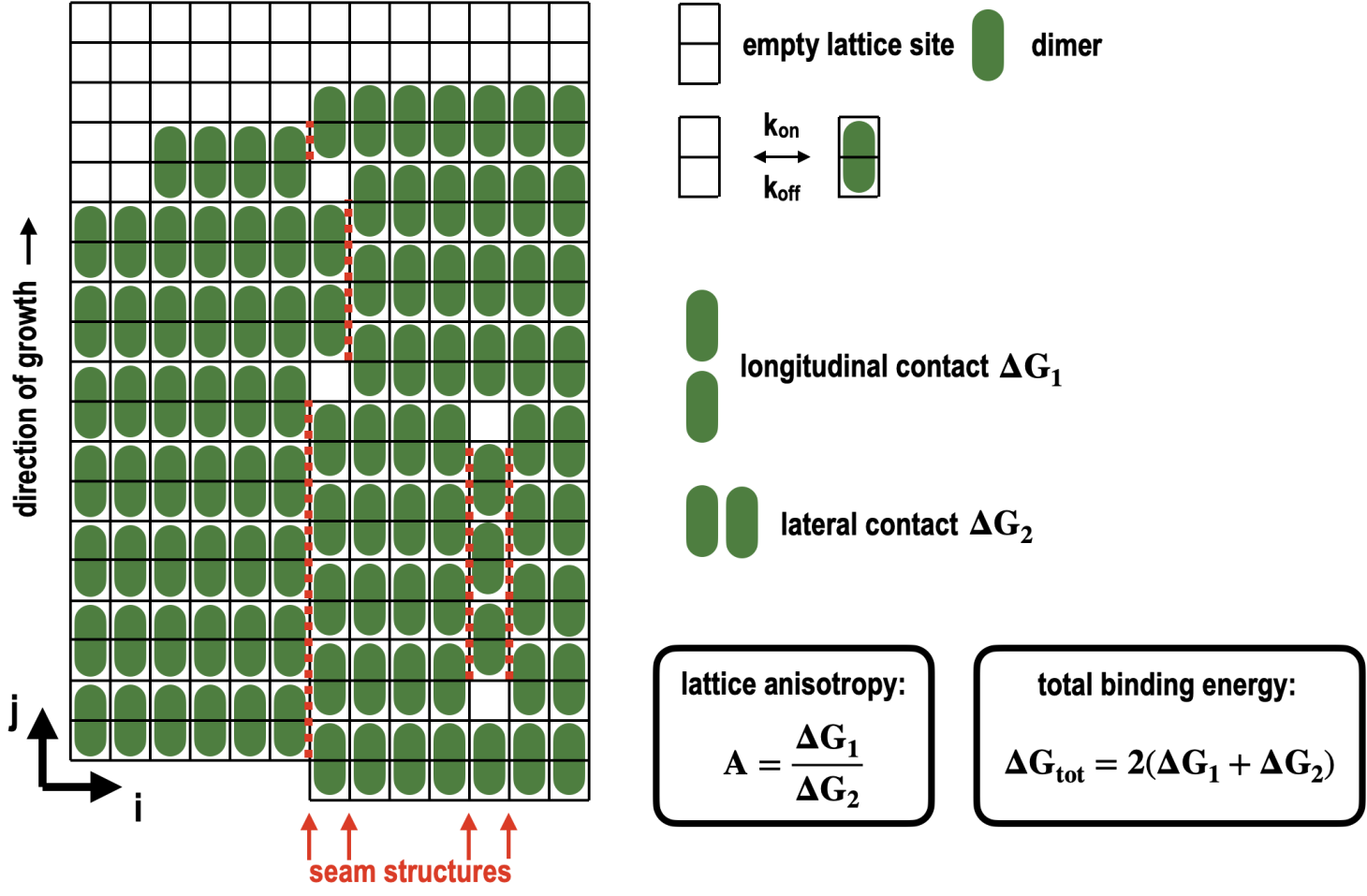- Share
- Share on Facebook
- Share on X
- Share on LinkedIn
Recruitment

Project Description
The MC2 team at the LIPhy conducts interdisciplinary research at the interface of mechanics, physics, and life sciences, using experimental and theoretical approaches at different scales. The goal of this internship is to conduct a theoretical kinetic study of topological defect creation in polymerizing microtubules.
Microtubules (MTs) are central structures in living cells, involved in cell division, migration, and intracellular transport. A complete understanding of the mechanisms regulating their dynamics and stability is a central issue in cell biology and a key challenge for human health. MTs are hollow cylindrical structures where tubulin dimers associate in a head-to-tail fashion into protofilaments, 13 of which form a tube by lateral association.
MTs grow by adding tubulin dimers to their extremities. It has been known since the 1990’s that the MT lattice contains topological defects, the most prominent being dislocations [1]. However, recently it was discovered that monomer vacancies [2], which engender so-called multi-seam structures, are much more prevalent than dislocations. Currently, we have no knowledge under which conditions monomer vacancies are created during MT tip growth, as all models stipulate the head-to-tail association of new dimers to existing protofilaments at the MT extremity. The goal of this internship is to simulate MT tip growth using a previously developed kinetic Monte Carlo and to determine the lattice parameters (lattice binding energy and anisotropy) under which monomer vacancies and multiseam structures can be formed. The obtained lattice parameters are then critically compared to values found in the literature.
With this project we expect to gain (i) a first understanding of the conditions of defect formation in the growing MT tip and (ii) narrow down MT lattice parameters, which vary hugely in the literature.
References
[1] Chrétien, D., Metoz, F., Verde, F., Karsenti, E. & Wade, R. H. Lattice defects in microtubules: protofilament numbers vary within individual microtubules. J. Cell Biol. 117, 1031–1040 (1992).
[2] Guyomar, C. et al. Changes in seam number and location induce holes within microtubules assembled from porcine brain tubulin and in xenopus egg cytoplasmic extracts. eLife 11, e83021 (2022).
Expected Skills
This project is theoretical, interdisciplinary (physics, biology) and will be carried out in collaboration with a Ph.D. student. The ideal candidate has an interest in soft matter physics, biophysics and modeling complex dynamical systems. Previous experience in modeling and scientific programming (C, C++, Python) would be appreciated but is not required.
Download
Stage-M2-Microtubules.pdf (PDF, 2.03 MB)
Contact
Amir ZABLOTSKY
MC2 team
amir.zablotsky univ-grenoble-alpes.fr (amir[dot]zablotsky[at]univ-grenoble-alpes[dot]fr)
univ-grenoble-alpes.fr (amir[dot]zablotsky[at]univ-grenoble-alpes[dot]fr)
Karin JOHN
MC2 team
karin.john univ-grenoble-alpes.fr (karin[dot]john[at]univ-grenoble-alpes[dot]fr)
univ-grenoble-alpes.fr (karin[dot]john[at]univ-grenoble-alpes[dot]fr)
- Share
- Share on Facebook
- Share on X
- Share on LinkedIn